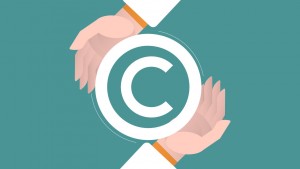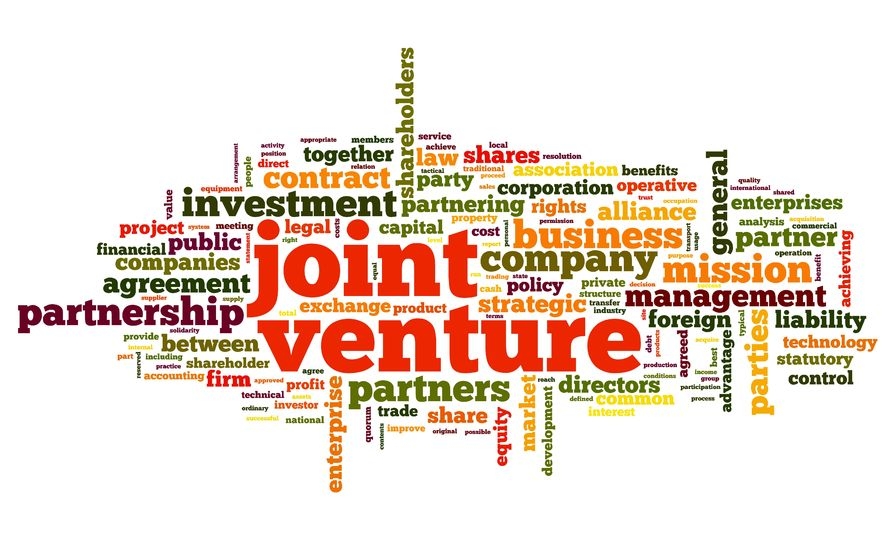In this blog post, Mansumyer Singh, Advocate and a student pursuing a Diploma in Entrepreneurship Administration and Business Laws by NUJS, analyses intellectual property issues in joint ventures.
Introduction
The term “Joint Venture” does not have any complex legal or technical meaning; it is simply an arrangement between two or more organizations in furtherance of a common objective. Joint Ventures can be structured in a number of ways to suit the individual parties, but broadly, it can be classified as under:
Incorporated joint ventures: An incorporated joint venture may be formed when the parties to the joint venture either incorporate a new entity for the joint venture or invest in developing an existing corporate entity.
Unincorporated joint ventures: Unincorporated joint ventures are contracts between the parties in furtherance of the fulfilment of a common profitable venture. The proceeds of the venture are shared in the ratio decided upon under the contract. Collaboration agreements, technology transfer agreements are examples of unincorporated joint venture contracts. They are ideal where the parties do not intend to be bound together by a rigid corporate structure.
The difference between incorporated and unincorporated joint venture models is that while the unincorporated model is normally used for collaborations that are narrow in scope and for a short-term, the incorporated model is utilized for long-term partnerships with a broader scope and which is not limited in time.
Advantages of a Joint Venture Structure
- Expanding the business into new geographic areas.
- Exploring new product categories.
- Convenient means for organizations to exploit and share IP assets with reduced financial investment.
- Reaping the economic benefits of commercialisation of the party existing Intellectual Property.
- Realising Economic benefit from Intellectual Property arising out of the joint venture, by sharing the expertise, technology, and strength with other organizations.
Intellectual Property (IP) and its Role in Joint Ventures
Intellectual Property is one of the primary considerations in a joint venture. This is because of a variety of reasons:
- once a joint venture company is formed, the ownership and protection of Intellectual Property that the joint venture company usually creates prime significance;
- The contribution by the parties in a joint venture may also be in the form of Intellectual Property.
Joint ventures are widely used across a range of industry sectors, particularly in the pharmaceutical, biotechnology, information technology, and communications sectors in which Intellectual Property rights are of huge importance.
Each party in a joint venture brings in their intellectual property called Background IP. Similarly, the joint venture will also generate IP which will be owned by the parties to the joint venture, referred to as Foreground IP.
One of the major issues faced by parties in a joint venture is the loss of rights in Intellectual Property capital contributed by them for the development of the joint venture (background IP).
Similarly, IP which is generated in the course of a joint venture (foreground IP) is also a problem area which becomes the root of disputes in some cases, particularly when the foreground IP is to be used or owned jointly by more than one party.
Since the role played by Intellectual Property in establishing a joint venture is a central one, it is fundamental that the parties clearly define at the outset, the ownership of the Intellectual Property to be created by the joint venture and their respective rights upon it.
It is also necessary to agree on the initial contribution of each party as well as on their responsibilities and obligations. All this can be set out either by a specific contractual arrangement corresponding to an unincorporated joint venture in an incorporated joint venture agreement setting up an independent legal entity.
Intellectual Property Issues in Joint Ventures
Intellectual property issues in joint ventures can be explained further by dividing the joint venture into stages:
- Stage 1: Pre-Contractual
- Stage 2: Contractual
- Stage 3: Implementation of JV obligations
- Stage 4: Termination of the JV
Stage 1- Pre-Contractual Stage: The sharing of valuable business information (trade secrets and know-how) is crucial for building a joint venture, particularly when Intellectual Property represents a big chunk of the capital contribution. 
Potential partners should protect their confidential information before disclosing it among themselves. This can be done by via a Non-Disclosure Agreement which is crucial at the stage where no arrangements are likely to be made, and consequently partners are not bound by any obligation. Once a JV agreement is to be set up, it is advisable to insert confidentiality clauses within it.
Stage 2- Contractual Stage: The contractual stage may be considered a fundamental one, as rules on Intellectual Property needs to be discussed and defined given the JV agreement. In the negotiation phase, decisions must be taken on whether the IP background should be assigned or licensed (or sublicensed) to other parties in the venture for project implementation. Background IP rights are usually licensed since the owner can have continuous control over them that way. The assignment is always possible but trickier, as the former owner would need access rights to the assigned background.
During negotiations, parties should also deliberate on the ownership of the foreground IP generated jointly or individually as a result of the venture. It should be decided as to whether joint ownership clauses should be included within the main JV agreement, or to deal with jointly owned IP on a case-by-case basis.
Stage 3- Implementation Stage: Ownership and exploitation/utilization of foreground IP are key issues during the execution phase of the joint venture. Parties should decide who will own the foreground IP and who can utilize it. Another issue that might arise is the improvements to an already existing background IP made by one of the parties to the venture. Background IP improvements are often claimed by the background IP contributor.
It is to be noted that the above is true only if no agreement exists to the contrary. It is advisable to provide clear definitions/provisions dealing with these complex aspects of ad-hoc agreements to avoid disputes. A common practice is to assign the entire foreground (IP) to the JV Company. If foreground IP is jointly owned, a joint ownership agreement should be drafted, clearly identifying the proportion and manner in which the rights are to be held by the respective parties.
The new entity formed as a result of the joint venture can itself exploit the IP resulting from the JV through production, R&D, marketing, and commercialization. However, parties can decide to individually exploit their foreground IP. In other cases, they can assign the rights to exploit/utilize foreground to other parties. To do so, venture partners may need to grant access to their background for it to be used together with the foreground in the exploitation phase.
Stage 4- Termination Stage: Although an outline of the exit plan should already be drafted at the negotiation phase, the precise terms of which a joint venture may come to an end are usually agreed on during the implementation phase or when a termination event happens.
A termination on friendly terms will see venture partners negotiate the terms related to the foreground repartition, normally based on the contribution of each party, and arrange all the necessary licenses to terminate. It is common practice that when termination is due to a breach of contract, the insolvent party will lose all its rights that should be reverted to other parties of the joint venture.
Conclusion
Intellectual property based license/assignment agreements form the backbone of most joint ventures. While transferring (licensing or assigning) an intellectual property right, issues may arise if the parties do not follow the necessary provisions of the law. For example, in the assignment of any copyright, one must conform to certain parameters namely;
- it must be in writing,
- it must be signed by both the parties
- it must specify the rights licensed,
- it must specify the royalty payable if any,
- the term of the license and the territory for the rights[1]
Similarly, while transmitting trademarks, the licensor must ensure that the transmission does not create exclusive rights to use the mark in more than one person, with respect to using the trademark for the same types of goods and services or similar description of goods or services and such similarity should not be likely to create any confusion or deception.[2]
Disputes involving the post-term use of the licensor’s mark by the joint venture are potential litigious issues once the licensor has exited the joint venture, and the term of the license has expired. Often, once the licensor has opted for an exit, it may be possible that the joint venture entity continues to use the trademark for reference purposes or as part of a corporate name.
Careful drafting of the joint venture agreement and the trademark license agreement could minimize the risks arising from such litigation.
As it is a signatory to the international conventions on intellectual property rights, India offers adequate protection to trademarks or brand names as well as copyright and designs of foreign collaborators. Enforcement mechanisms are becoming more reliable, which has previously been a bone of contention for foreign corporations.
[divider]
References:
[1] Section 30 & 30A, Copyright Act, 1957
[2] Section 40, Trademarks Act, 1999
 Serato DJ Crack 2025Serato DJ PRO Crack
Serato DJ Crack 2025Serato DJ PRO Crack












 Allow notifications
Allow notifications




Hi Sir,
I being a land owner entered into development agreement come GPA for construction of flats in my sight to be completed before 30/9/2015, the builder had not completed the construction and has not obtained occupancy certificate. Kindly suggest the course of legal action against him as the delay in hand overing the flats causing damage/loss.
[…] Intellectual Property Issues In Joint Ventures […]